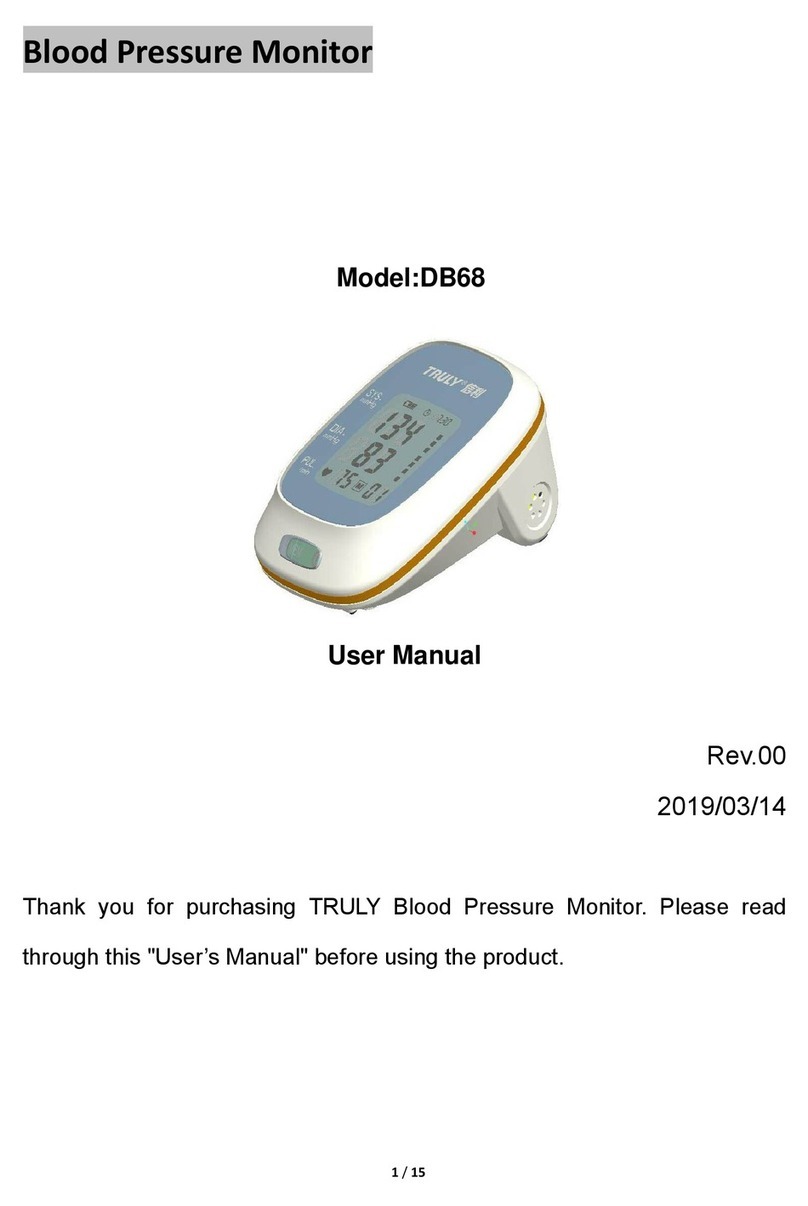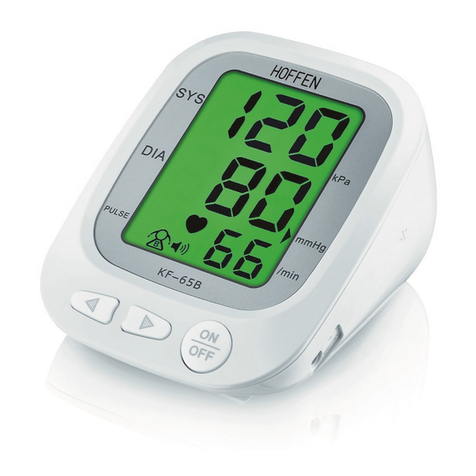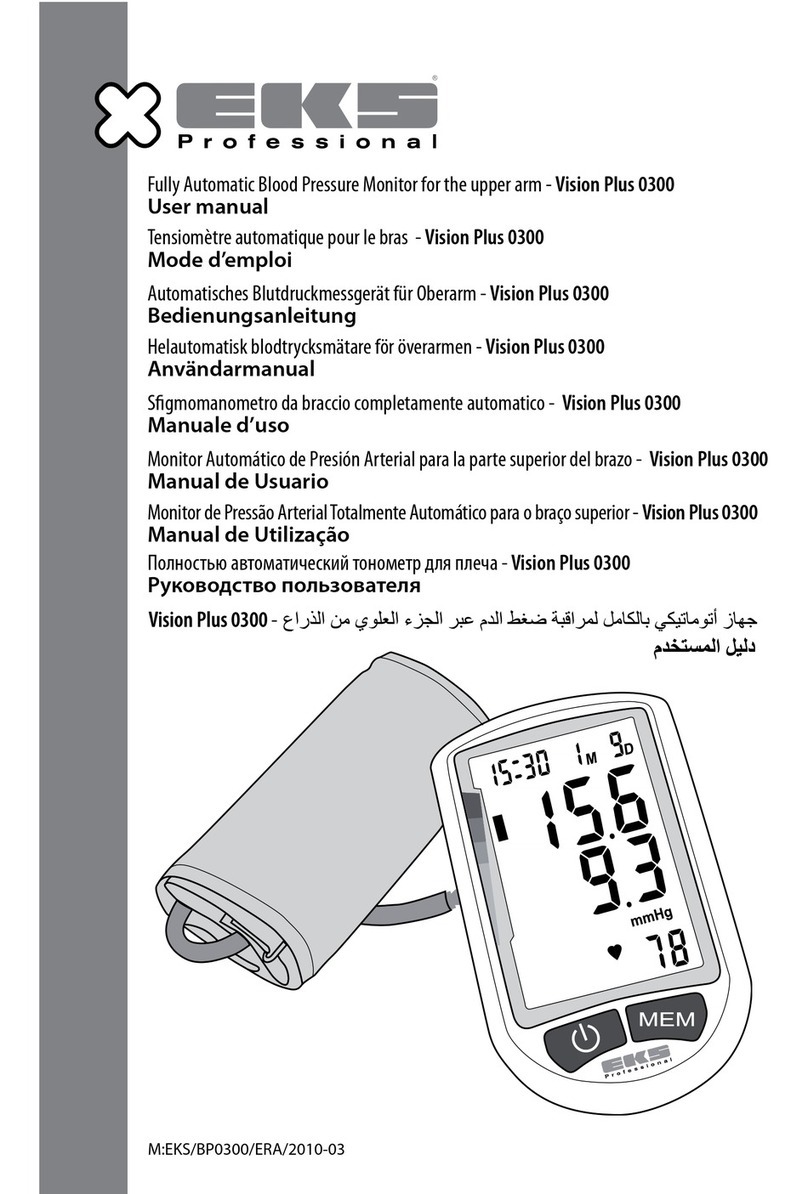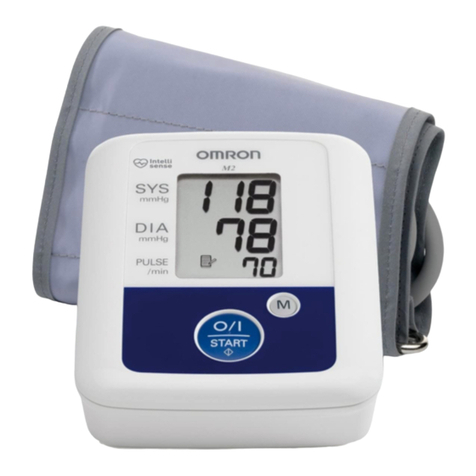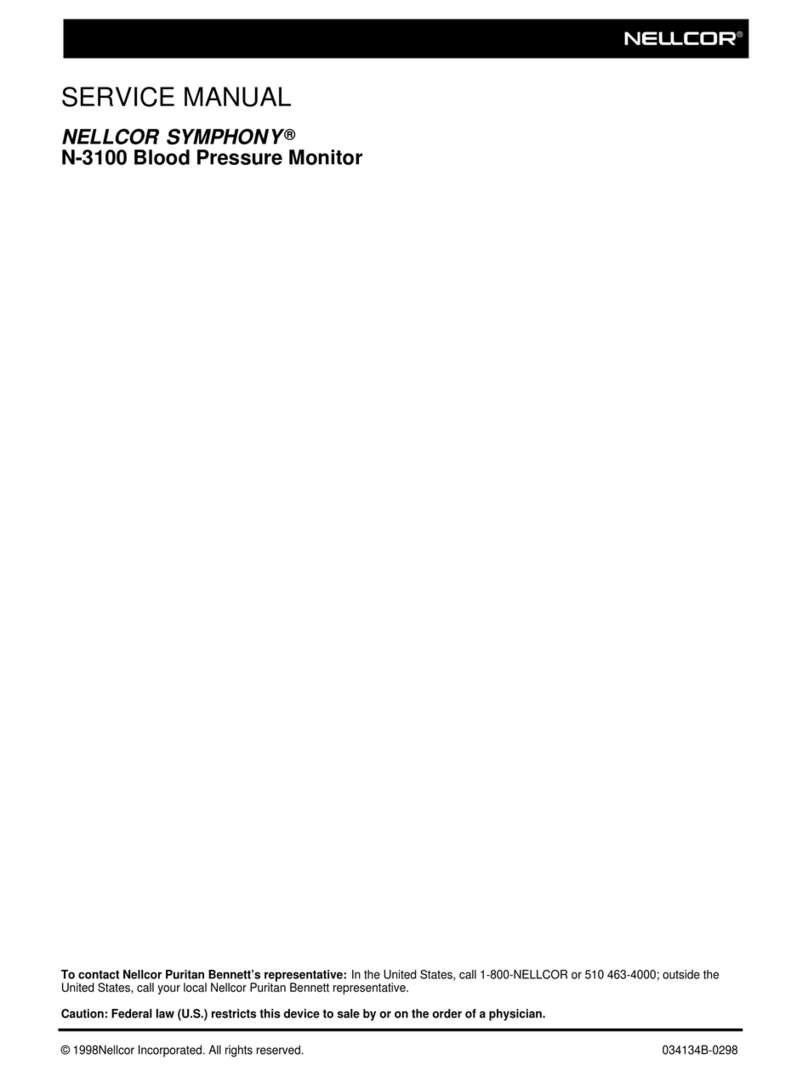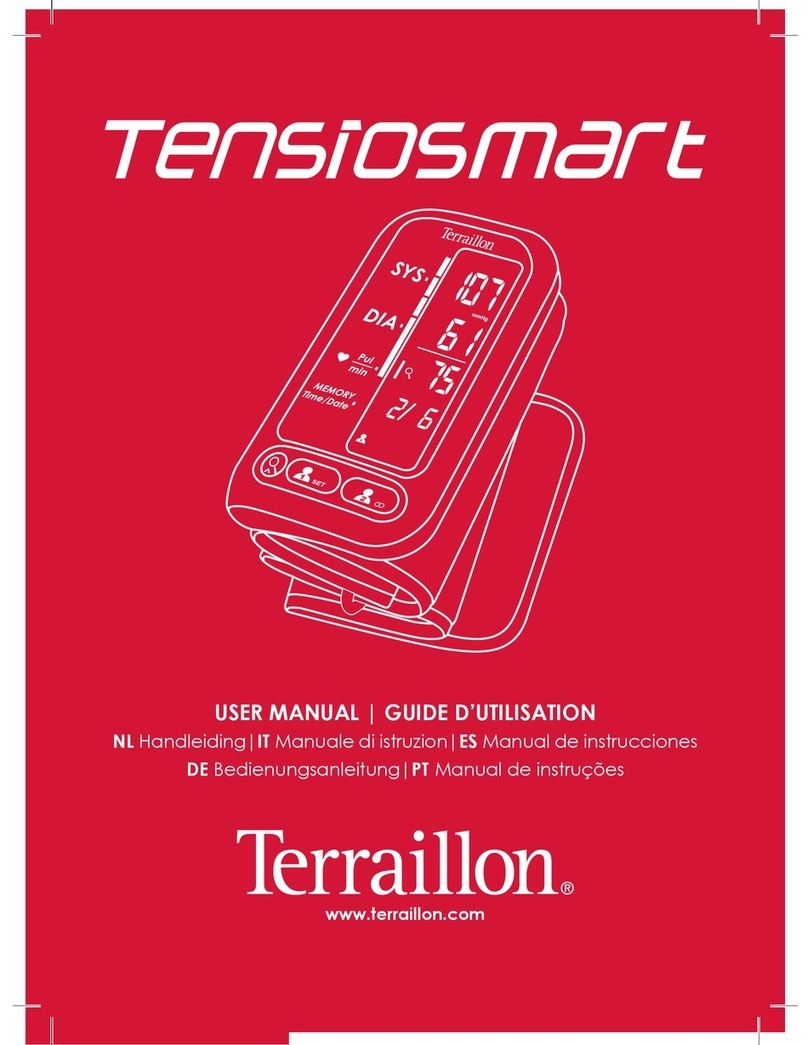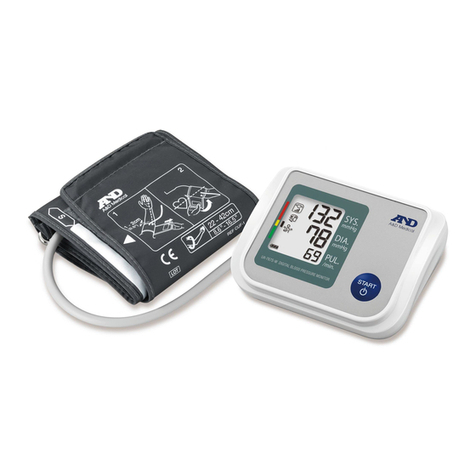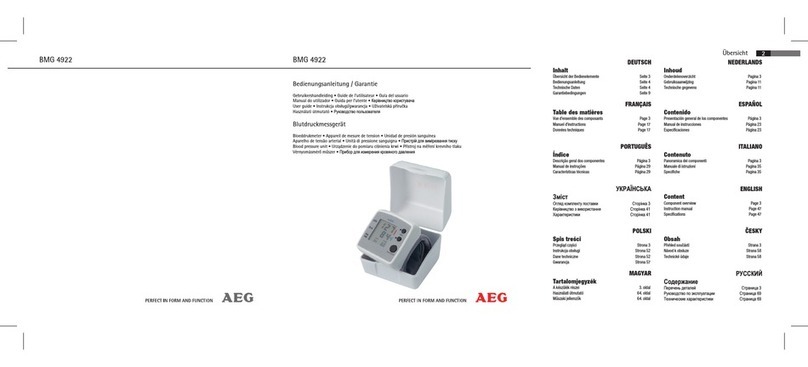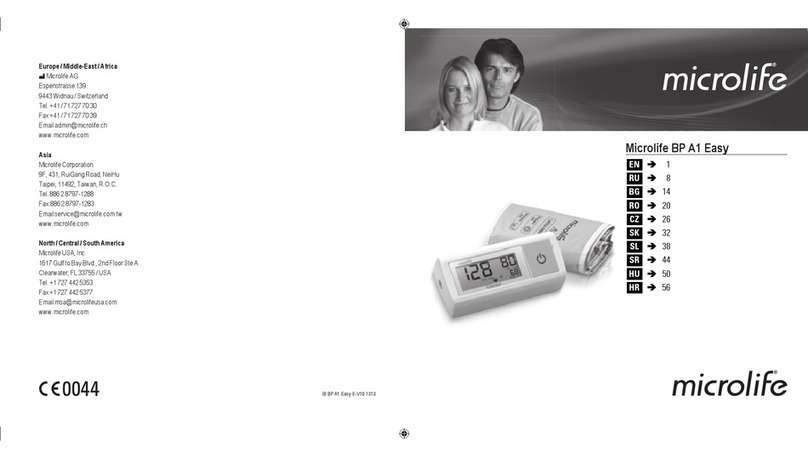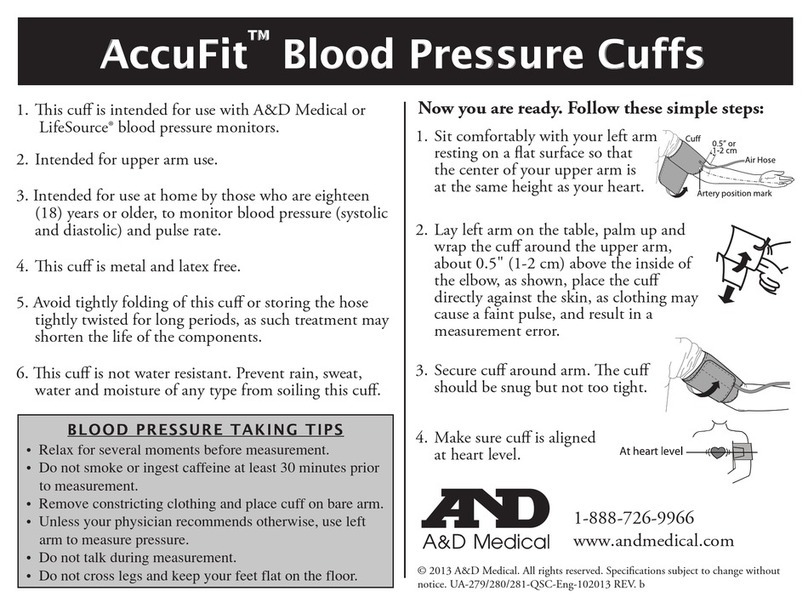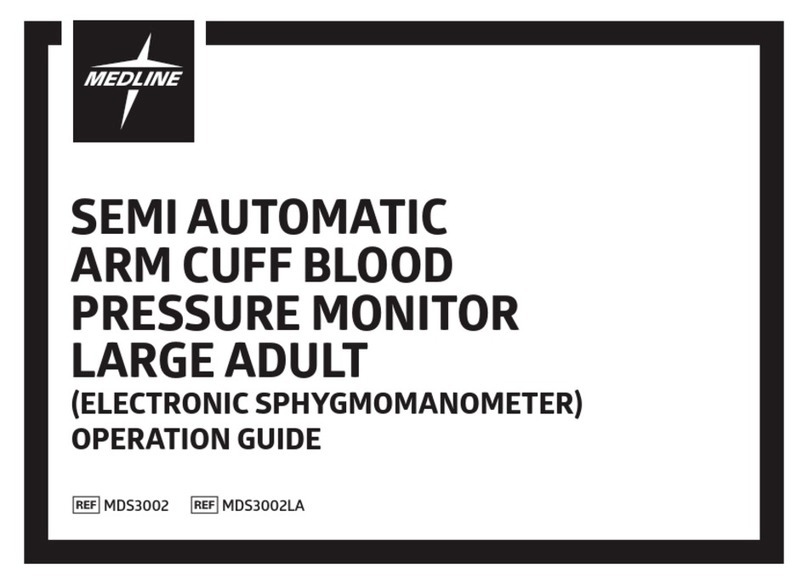BLUE STONE 80-5100 User manual

Contents
Safety Notice ............................................................... 02
Unit Illustration
Important Testing Guidelines
Quick Start ................................................................. 10
Blood Pressure Information
Blood Pressure Q&A
Maintenance
Specifications
......................................................... 06
..................................... 09
Unit Operation ........................................................... 12
........................................ 30
................................................... 34
............................................................... 36
............................................................. 40
Limited Warranty ........................................................ 44
Battery Installation .................................................. 12
System Settings ........................................................ 13
Applying The Wrist Monitor .................................... 16
Testing ..................................................................... 18
Power Off ................................................................. 23
.................... 25
Memory Deletion ...................................................... 27
Low Battery Indicator ............................................. 28
Troubleshooting ...................................................... 29
Memory Check and Last 3 Tests Average
Safety Notice
Safety Notice Safety Notice
Owner's Manual
Automatic Wrist
Digital Blood Pressure Monitor
Model 80-5100
1
3 4
Wrist Type
2
Document No. DBP-4004-003
Manufactured for:
Trademark Global, LLC
Lorain, OH 44053
Made in China
Version: Z
Date of Issue: 2014.01
Thank you for purchasing the 80-5100 Blood Pressure Monitor.
The unit has been constructed using reliable circuitry and
durable materials. Used properly, this unit will provide years
of satisfactory use.
The device is intended for used by adults with 12 years and older
to measure the systolic and diastolic blood pressure and pulse
rate. All values can be read out in one LCD DISPLAY.
Measurement position is on adult upper arm only.
Blood pressure measurement determined with this device are
equivalent to those obtained by a trained observer using the
cuff/ stethoscope auscultation method, within the limits
prescribed by the American National Standard (ANSI/AAMI
Sp10) for electronic sphygmomanometers.
Precautions to Ensure Safe, Reliable Operation
1. Do not drop the unit. Protect it from sudden jars or shocks.
2. Do not insert foreign objects into any openings.
3. Do not attempt to disassemble the unit.
4. Do not crush the pressure cuff.
5. If the unit has been stored at temperatures below 0 oC, leave it in
a warm place for about 15 minutes before using it. Otherwise, the
cuff may not inflate properly.
6. Do not store the unit in direct sunlight, high humidity or dust.
7.To avoid any possibility of accidental strangulation, keep this unit
away from children and do not drape tubing around your neck.
8.Ensure that children do not use the instrument unsupervised;
some parts are small enough to be swallowed.
9.Some may get a skin irritation from the cuff taking frequent
readings over the course
of the day, but this irritation typically goes away on its own after
the monitor is removed.
Important Instructions Before Use
1. Do not confuse self-monitoring with self-diagnosis. Blood
pressure measurements should
only be interpreted by a health professional who is familiar with
your medical history.
2. Contact your physician if test results regularly indicate abnormal
readings.
3. If you are taking medication, consult with your physician to
determine the most appropriate
time to measure your blood pressure. NEVER change a prescribed
medication without first consulting with your physician.
4. Individuals with serious circulation problems may experience
discomfort. Consult your physician prior to use.
5. For persons with irregular or unstable circulation resulting from
diabetes, liver disease,arteriosclerosis or other medical
conditions, there may be variations in blood pressure values
measured at the wrist versus at the upper arm. Monitoring the
trends in your blood pressure taken at either the arm or the wrist is
nevertheless useful and important.
6. People suffering from vascular constriction, liver disorders or
diabetes, people with cardiac pacemakers or a weak pulse, and
women who are pregnant should consult their physician before
measuring their blood pressure themselves. Different values may
be obtained due to their condition.
7. People suffering from arrhythmias such as atrial or ventricular
premature beats or atrial fibrillation only use this blood pressure
monitor in consultation with your doctor. In certain cases
oscillometric measurement method can produce incorrect readings.
8.Too frequent measurements can cause injury to the patient due to
blood flow interference.
9.The cuff should not be applied over a wound as this can cause
further injury.
10.Do not attach the cuff to a limb being used for IV infusions or
any other intravascular access, therapy or an arterio-venous
(A-V) shunt. The cuff inflation can temporarily block blood
flow, potentially causing harm to the patient.
11.The cuff should not be placed on the arm on the side of a
mastectomy. In the case of a double mastectomy use the side of
the least dominant arm.
12.Pressurization of the cuff can temporarily cause loss of function
of simultaneously used monitoring equipment on the same limb
13.A compressed or kinked connection hose may cause continuous
cuff pressure resulting in blood flow interference and potentially
harmful injury to the patient.
14.Check that operation of the unit does not result in prolonged
impairment of the circulation of the patient.
15.Product is designed for its intended use only. Do not misuse in
any way.
16. Product is not intended for infants or individuals who cannot
express their intentions.
17. Any hazards associated with prolonged overinflation of the
bladder.

SYS
DIA
PLU
M
SET
mmHg
mmHg
/min
START
STOP
Unit IllustrationUnit Illustration Unit Illustration
Unit Illustration
Display
5
7
9 10
6
8
Important Testing Guidelines
1. Avoid eating, exercising, and bathing for 30 minutes prior to
testing.
2
. Try to measure your blood pressure at the same time each day
for consistency.
8
. Sit in a calm environment for at least 5 minutes prior to testing.
3. Do not stand while testing. Sit in a relaxed position while
keeping your wrist level with your heart.
4. Avoid speaking or moving body parts while testing.
5. While testing, avoid strong electromagnetic interference such
as microwave ovens and cell phones.
6. Wait 3 minutes or longer before re-testing.
7
. Test comparisons should only be made when monitor is used
on the same wrist, in the same position, and at the same time of
day.
9. This blood pressure monitor is not recommended for people
with severe arrhythmia.
10.Do not use this blood pressure monitor if the device is damaged.
Quick Start
1. Install batteries. (See Figure A )
2 . . Remove clothing from the wrist area (See Figure B)
3. Rest for several minutes prior to testing. Wrap cuff around
left wrist (See Figure C).
3.Plastic Storage Case
Monitor Unit
AVG
mmHg kPa
No
(
( )
)
/
Groups
Last 3 results average
Time
Date Pulse
Rate
Low Battery Indicator
WHO Blood Pressure
Classification Indicator
Irregular Heartbeat Indicator
Systolic
Blood
Pressure
Diastolic
Blood
Pressure
SYS
DIA
PLU
M
SET
mmHg
mmHg
/min
START
STOP
LCD
" START/STOP " Button
" M " Button
" SET " Button
Wrist Cuff
World Health Organization (WHO)
Blood Pressure Classification Indicator
Pulse Rate
Systolic Blood Pressure
Diastolic Blood Pressure
2.Owner's Manual
Contents
Figure CFigure B
Figure A
1.Monitor Unit
1-2cm ''
(0.4-0.8 )
Safety Notice
SETM
SYS
PUL
/min
DIA
mmHg
mmHg
STOP
START
18. Do not disassemble the unit or arm cuff. Do not attempt to repair.
19. Use only the approved arm cuff for this unit. Use of other arm
cuffs may result in incorrect measurement results.
20. The system might produce incorrect readings if stored or used
outside the manufacturer's specified temperature and humidity
ranges.
21. Do not use cell phones and other devices, which generate strong
electrical or electromagnetic fields, near the device, as they may
cause incorrect readings and interference or become interference
source to the device.
22. Do not mix new and old batteries simultaneously
23. Replace batteries when Low Battery Indicator" " appears on
screen. Replace both batteries at the same time.
24. Do not mix battery types. Long-life alkaline batteries are
recommended.
25. Remove batteries from device when not in operation for more
than 3 months.
26. Do not insert the batteries with their polarities incorrectly aligned.
27. Dispose batteries properly; observe local laws and regulations.
28. Only use a recommended AC adapter complying with
EN 60601-1 and EN 60601-1-2. An unauthorized adapter may
cause fire and electric shock.
29. Refer to instruction manual/ booklet symbol.
Owner's Manual
Automatic Wrist
Digital Blood Pressure Monit or
Mod el 80-5100
Wris t Type

//
Unit Operation Unit Operation
Unit Operation
Unit Operation
System Settings
“ ”
“ ”
With power off, press SET button to actuate system setting .
The Memory Group icon flashes.
1. select memory Group
Wile in the System Setting mode you may accumulate test
rescuts into 2 diffterent groups. This allows multiple users to
save individual test results ( up to 60 memories per group).
Press M button to choose a group setting. The test
results will automatically store in each selected group.
3. Time Format Settung.
Press “SET”button again to set the time format mode.
Set the time format by adjusting the “M” button .
EU means European Time US means U.S Time.
11
13 14
12
15
4. Save Settings
While in any setting mode, press " START/STOP " button to
turn the unit off. All information will be saved.
1-2cm ''(0.4-0.8 )
SETM
SYS
PUL
/min
DIA
mmHg
mmHg
STOP
START
Applying The Wrist Monitor
Do not apply over clothing. If wearing a long sleeved shirt,
be sure to roll sleeve back to forearm.
Apply monitor to wrist as illustrated. Tighten cuff firmly as
not to wiggle.
Note: Unit will automatically save all information and shut off
if left idle for 3 minutes.
Unit Operation 16
2. Time/Date setting
Press “SET” button again to set the Time/Date mode. Set the
year first by adjusting the “M” button. Press “SET” button
again to confiom curret month. Continue setting the day, hour
and minute in the same way. Every time the “SET”button is
pressed, it will lock in your seletion and continue in
succession ( month,day,hour minute)
/
Quick Start
4. Sit in a comfortable position and place wrist level with heart.
(See Figure D)
5. Press button to start testing. (See Figure E) " START/STOP "
Figure E
Figure D
SETM
SYS
PUL
/min
DIA
mmHg
mmHg
STOP
START
Battery Installation
Slide battery cover off as indicated by arrow.
Install 2 new AAA alkaline batteries according to polarity.
Close battery cover.
Note:
1) " "
2) Batteries should be removed from device when not in
operation for an extended period of time.
Replace batteries when Low Battery Indicator
appears on screen.

AVG
mmHg kPa
No
(
( )
)
/
mmHg
/
mmHg
/
Unit Operation
Unit Operation
Unit Operation
Unit Operation
Unit Operation
18
20
17
19
21
Testing
1. Power On
"START/STOP"
The LCD screen will appear for one second as unit performs
a quick diagnosis. A long tone indicates device is ready for
testing.
Press and hold button until a beep sounds.
Note: Unit will not function if residual air from previous
testing is present in cuff. The LCD will flash " "
until pressure is stabilized.
2.
Initial pressure is first pumped to 190mmHg. If the current
user's systolic blood pressure is over 190mmHg, the unit
will automatically re-inflate to the proper shelf.
Pressurization
Note: Pressurization will gradually subside and ultimately
stop when cuff is not properly applied to the wrist.
If this occurs, press“START/STOP ”button to turn
the unit off.
3. Testing
After cuff inflation, air will slowly subside as indicated by the
corresponding cuff pressure value. A flashing " " will
appear simultaneously on screen signaling heart beat detection.
Note: Remain relaxed during testing. Avoid speaking or
moving body parts.
4. Result Display
Three short beeps sound when testing is complete.
The screen will display measurements for systolic and
diastolic blood pressure. An indicator representing
the current measurement will appear next to the
corresponding WHO Classification. Irregular Heartbeat Indicator
If the monitor detects an irregular heart rhythm two or more
times during the measuring process, the Irregular Heartbeat
Symbol " "appears on screen along with measurement
results. Irregular heartbeat rhythm is defined as rhythm that
is either 25% slower or faster than the average rhythm detected
while measuring systolic blood pressure and diastolic blood
pressure. Consult your physician if the Irregular Heartbeat
Symbol " " frequently appears with your test results.
Indicator
Unit Operation 22
Note: Refer to Page 31~32 for detail WHO Blood Pressure
Classification Information.
mmHg
/
(
( )
)
(
( )
)
Do not stand while testing. Sit in a comfortable position and
place wrist level with heart.

Unit Operation Unit Operation
Unit Operation Unit Operation
Unit Operation
2423
25 26
27
Memory Deletion
Memory for a selected group may be deleted while in Memory
Check mode. Press and hold the " SET " button for
approximately 3 seconds to delete all memory records from the
selected group. The monitor will beep indicating successful
deletion and then transfer into testing mode. To delete momories
from other groups, please refer to " Select Memory Group " on
page 10. Then press the " START/STOP " button to turn the unit
off.
Note: Memory cannot be recovered once it has been deleted.
Low Battery Indicator
4 short warning beeps sound when battery life is depleting and
unable to inflate cuff for testing. The " " appears
simultaneously for approximately 5 seconds prior to shutting
down. No memory loss will occur
throughout this process.
Replace batteries at this time.
Unit Operation 28
Safety Precaution: If pressure in cuff becomes too extreme
while testing, press the " START/STOP " button to turn
power off.
The cuff pressure will rapidly dissipate once the unit is off.
5.
User may delete their current test result due to unfavorable
testing conditions or for any other reason. To delete the last
test result, press the "SET" button after result is displayed.
If result is not deleted, it will automatically store by date
within the previously configured Memory Group.
Deleting/Storing Test Results
Note: Be sure the appropriate Memory Group selection is
made prior to testing.
Power Off
The " START/STOP " button can be pressed to turn off the unit
in any mode.
The unit can turn off the power itself about 3 minutes no
operation in any mode.
If the number of tests surpasses the allotted 60 memories per
group, the most recent tests will appear first, thus eliminating
older readings.
With power off, press the " M " button to activate
screen display. After the unit performs a self diagnosis, the
screen will display the average test results from the last 3
readings of the last group used . The " " symbol will appear
along with the corresponding WHO Blood Pressure Indicator.
To check the average results from other groups, select the
desired group first prior to activating the " M " button
in the off position (See "Select Memory Group" on page 13).
Press the "M" button again, you may check past test results.Upon
activating test results, you can press the"M "button to scroll through
all test results stored in memory. The LCD will display the last
memory as NO: 01 reading.
Note: Past test results will only be displayed from the most recently
used memory group. To check past test results in other memory
groups, you must first select the desired group and then turn
monitor off . ( See Select Memory Group on Page 13. )
Memory Check and Last 3 Tests Average
mmHg
M
D
AVG
AVG
mmHg
M
D
M
D
No
Table of contents
Other BLUE STONE Blood Pressure Monitor manuals


